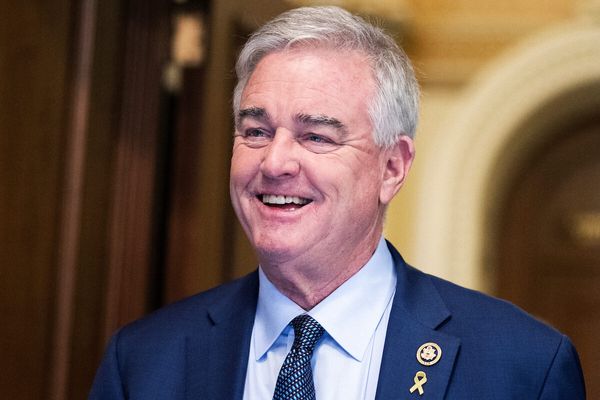
The gender pay gap at more than 100 commonwealth public sector employers, including the ABC, has been laid bare for the first time, with the national broadcaster paying men nearly 10% more than women when median total remuneration is compared across the organisation.
Overall, pay gaps at commonwealth public sector employers were significantly better than those in the private sector, as revealed in March. The average total remuneration pay gap of 21.1% was more than triple the average public sector gap of 6.4%. While sectors were compared on average, employers were assessed on median gaps.
Nearly half (45%) of all commonwealth public sector employers had pay gaps in the target range (+/-5%), compared with 31% in the private sector.
The median pay gap at the ABC – of 9.8% – puts it ahead of the national median pay gap but behind other news outlets such as the Guardian (-2.5% – a negative pay gap indicates a pay gap in favour of women), News Ltd (5.6%), Australian Associated Press (5.8%), and Network Ten (6.5%).
SBS’s gender pay gap, released for the first time on Wednesday, is 1.9%.
The ABC’s pay gap is smaller than Nine’s (15.3%) – though the gap at Nine newspaper the Age is lower (7%) – as well as than Seven West Media (11.5%), Radio 2GB (12.7%) and Win Corporation (14%).
A spokesperson for the ABC said: “The ABC has been conducting a regular gender pay gap analysis since 2019 to ensure we identify, understand and appropriately address any significant pay gaps across our workforce. Meaningful gaps, which are found to occur at any pay band, are investigated to ensure we understand the cause and can take any action required.”
Despite the public sector’s generally strong results compared with the private sector, many public agencies and employers still had large pay gaps favouring men. These were concentrated in areas relating to mining, transport, finance and policing – mirroring industry-level disparities in the private sector.
The largest pay gap was 50.4% at the National Offshore Petroleum Safety and Environmental Management Authority, meaning the median salary for a male employee was double that of a woman’s. This was followed by the Coal Mining Industry Corporation (31.7%), Civil Aviation Safety Authority (30.9%), and Australian Maritime and Safety Authority (30.4%).
Pay gaps at some of the largest commonwealth public sector employers included the Australian federal police (12.2%), the Reserve Bank of Australia (11.5%), CSIRO (11.3%), Australia Post (8.6%), the ATO (4.8%) and the National Disability Insurance Agency (0.7%).
Most federal government departments had neutral pay gaps (+/-5%). Exceptions to this were the Department of Home Affairs (9.3%), Department of Health and Aged Care (7.8%), Attorney General’s Department (7.4%), and Department of Climate Change, Energy, the Environment and Water (7%).
While equal pay for equal work has been the law in Australia for more than 50 years, gender pay gap data reflects that men are often employed in higher-paid, more senior roles.
“The public sector is not immune from the broader industry trends that we see, and they need to continue to be vigilant and work hard on addressing the areas where it’s not traditional to employ women, for example, in senior management,” said Mary Wooldridge, chief executive of the Workplace Gender Equality Agency.
“These results show very clearly that there’s still a significant amount of work to be done within individual agencies.”
Wooldridge said the public sector’s generally better results were largely driven by a requirement under the Public Service Act that employers have a gender equality strategy and aim for gender balance in management roles.
Public sector workers were also far more likely to work full-time than in the private sector – with 82% of public sector employees employed full-time, including 76% of women, compared with 55% in the private sector (43% of women). This was likely the result of the public service’s commitments to flexible work, said Wooldridge.
“There does seem to be the opportunity that where people have the capacity to work flexibly, that they’re more able to take on full-time roles, knowing they’ll be able to do them in a way that enables them to balance other responsibilities, particularly caring responsibilities,” she said.
Men in the public sector, however, were less likely to take up parental leave than in the private sector. Men accounted for just 11% of all primary carers’ leave taken in the public sector, compared with 17% in the private sector.
Wooldridge said changes to the Maternity Leave (Commonwealth Employees) Act introduced in 2024 would hopefully make leave more accessible to men and see more fathers take it up.
“But that environment and even just that language [of the act] … is part of the context for perhaps why we haven’t seen such a positive and growing uptake of men [for] primary carers’ leave as we would expect.”
The government began publishing the pay gaps at private employers last year.
The publication of pay gaps at individual employers is part of the federal government’s push to reduce the stubbornly high national gender pay gap. Wooldridge said if it continued to fall at the current rate, pay equality would not be achieved for more than a century.







